Mine Waste coming in HOT
Barely a month after arriving in Australia, I volunteered to go on my first field campaign with MIWATCH. As the newest member on the team, I always see and hear about these busy bees working on so many projects that I just wanted to get in on the action as fast as I could. Since I’m used to working on the field, I was definitely excited to get my hands dirty again - but I don’t think I was quite ready for what the trip had in store for me!
With MIWATCH’s Le Xi K’ng and Dipanshu Sharma, we prepared to go to 3 sites in Cloncurry: Great Australia, Kuridala, and Young Australian.
These 3 sites are part of the Northwest Minerals Province and were historically of interest because of the abundance of copper. The Great Australia Mine (GAM) was discovered by explorer Ernest Henry in 1867 and was intermittently operated. The hypogene mineralisation of GAM consists solely of chalcopyrite within brecciated fault veins grading up to 8% Cu, 1 g/t Au, and 0.35% Co (Cannell and Davidson, 1998) – making this site of interest to MIWATCH because of the Cu and Co. Young Australian on the other hand, was mined for both its Cu and Au content. The last site, Kuridala, is a heritage-listed mining camp and was NW Queensland’s first boom-town, which now hosts a well-formed slag dump that the team was keen to sample for potential metals.
Early Monday we hopped on a plane to Mt Isa and made our way to Cloncurry. We met with Mark Brown of True North Copper, after inductions, we took a drive around to assess potential sampling sites. The next day we started early and headed into our first location – Great Australia’s TSF2 and by 6am (already a balmy high 30˚C), we started to hand auger our first hole.
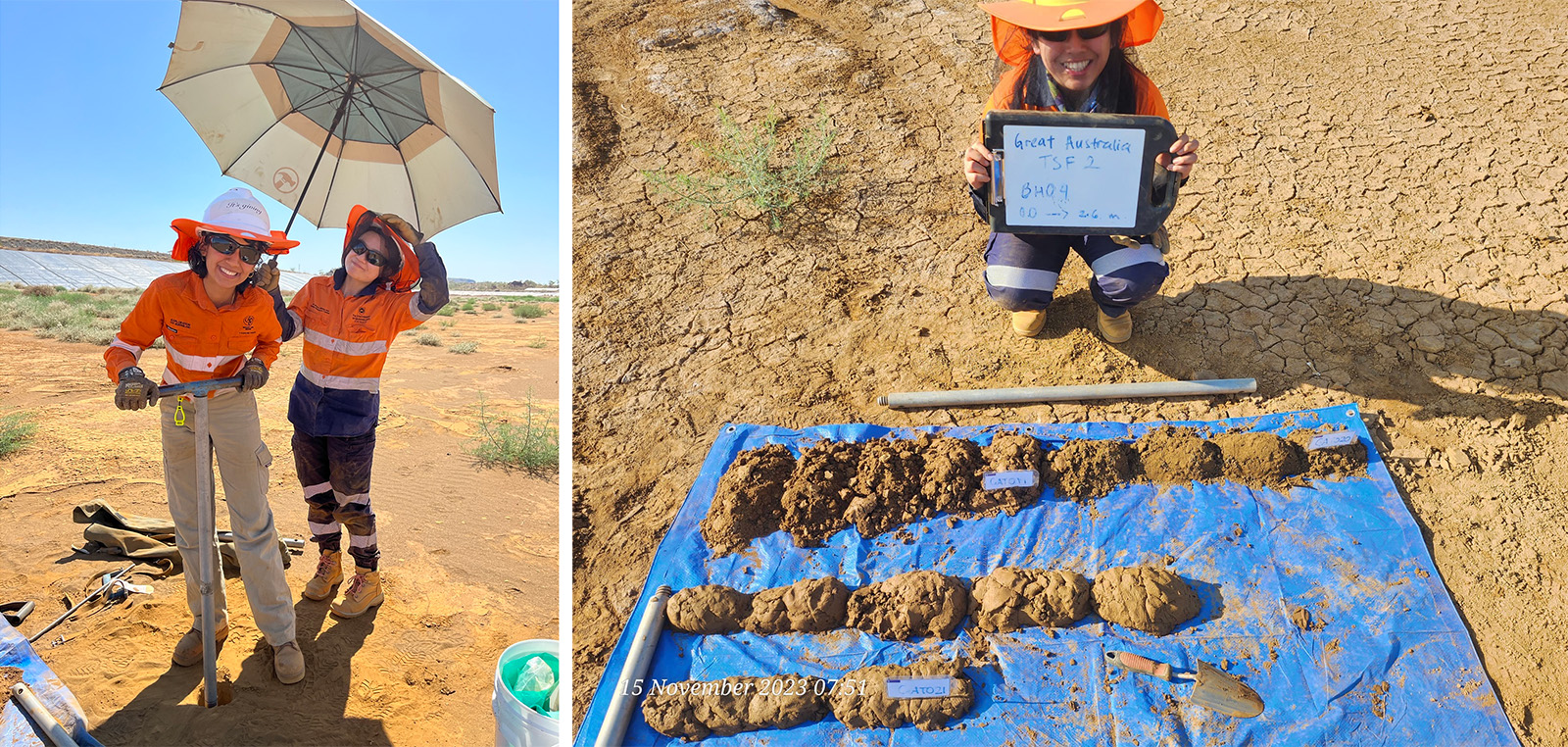
I quickly learned we needed to be extra efficient under the heat as it soared to the 40˚s throughout the morning. After finishing 3 holes, we took a well-needed lunch break where I met the most beautiful ice machine at the crib room (a special mention and big thank you to this great appliance for cooling us down!!!). In the afternoon we headed to the leach pile to get some additional grab samples. Our reward for the hard work on this campaign? A quick tour of True North’s copper crystal plant where we were able to see the most beautiful blue colour distinct to copper.
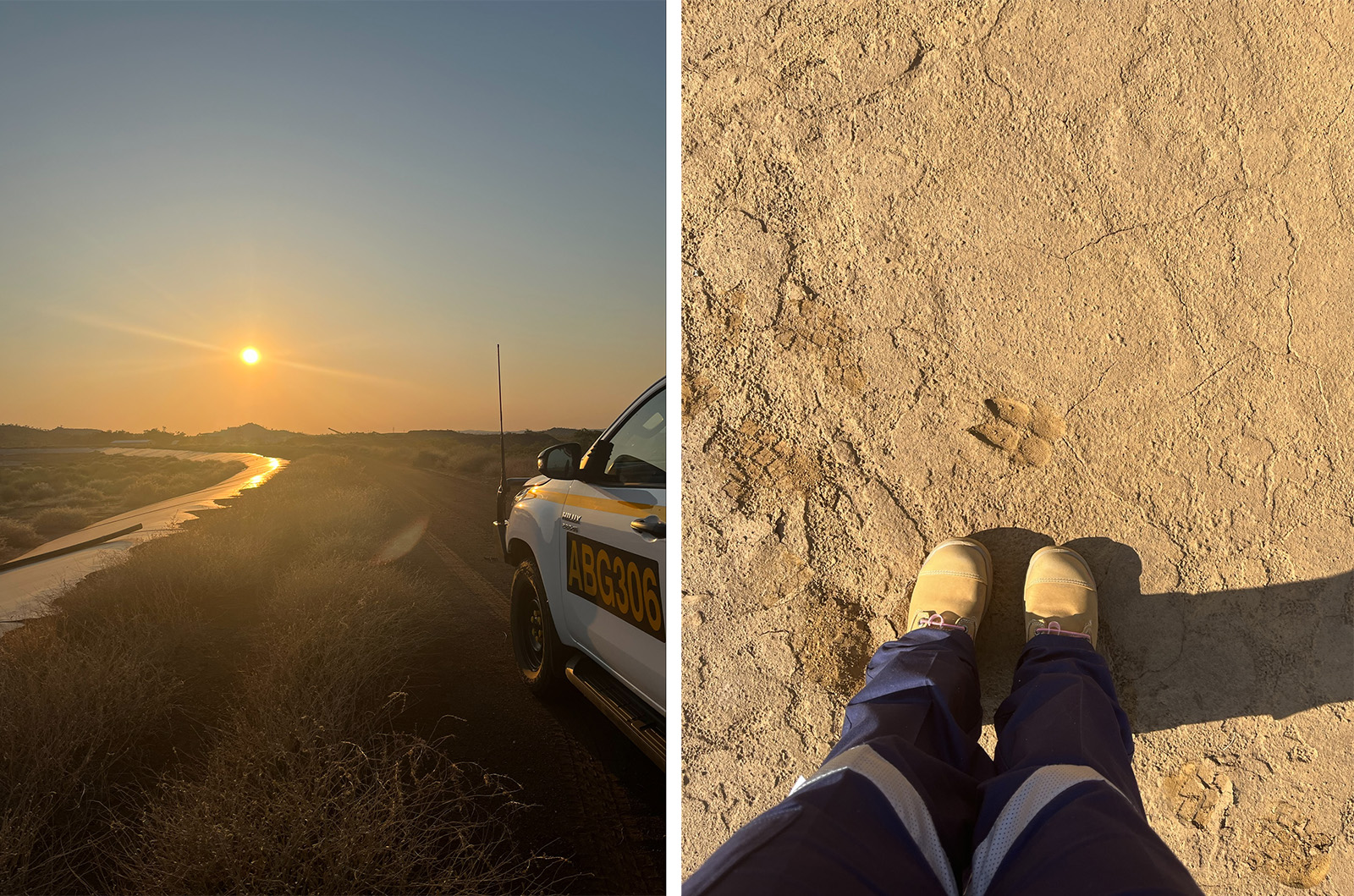
As we transferred over to Fetch Metals, we were lucky enough to have help along the way. We met up with Matthew Porter at their office before heading on to the Kuridala slag pile with their field-technicians. The visit to the Kuridala township is definitely recommended- as you are welcomed by a well-formed slag dump and the remains of a former operational smelter blast furnace and additional relict mining infrastructure. It would easily made me appreciate the large footprint we leave on the Earth (anybody read Sapiens: A Brief History of Humankind by Yuval Noah Harari?). But what a wake-up call to work harder to find sources of critical metals for our future! With the expected heat and the black of the slag, temperatures soared quickly upwards of 40˚C but we soldiered on collecting samples and happily (or at least gratefully) brought home 40 bags of slag for our Queensland mine waste project.
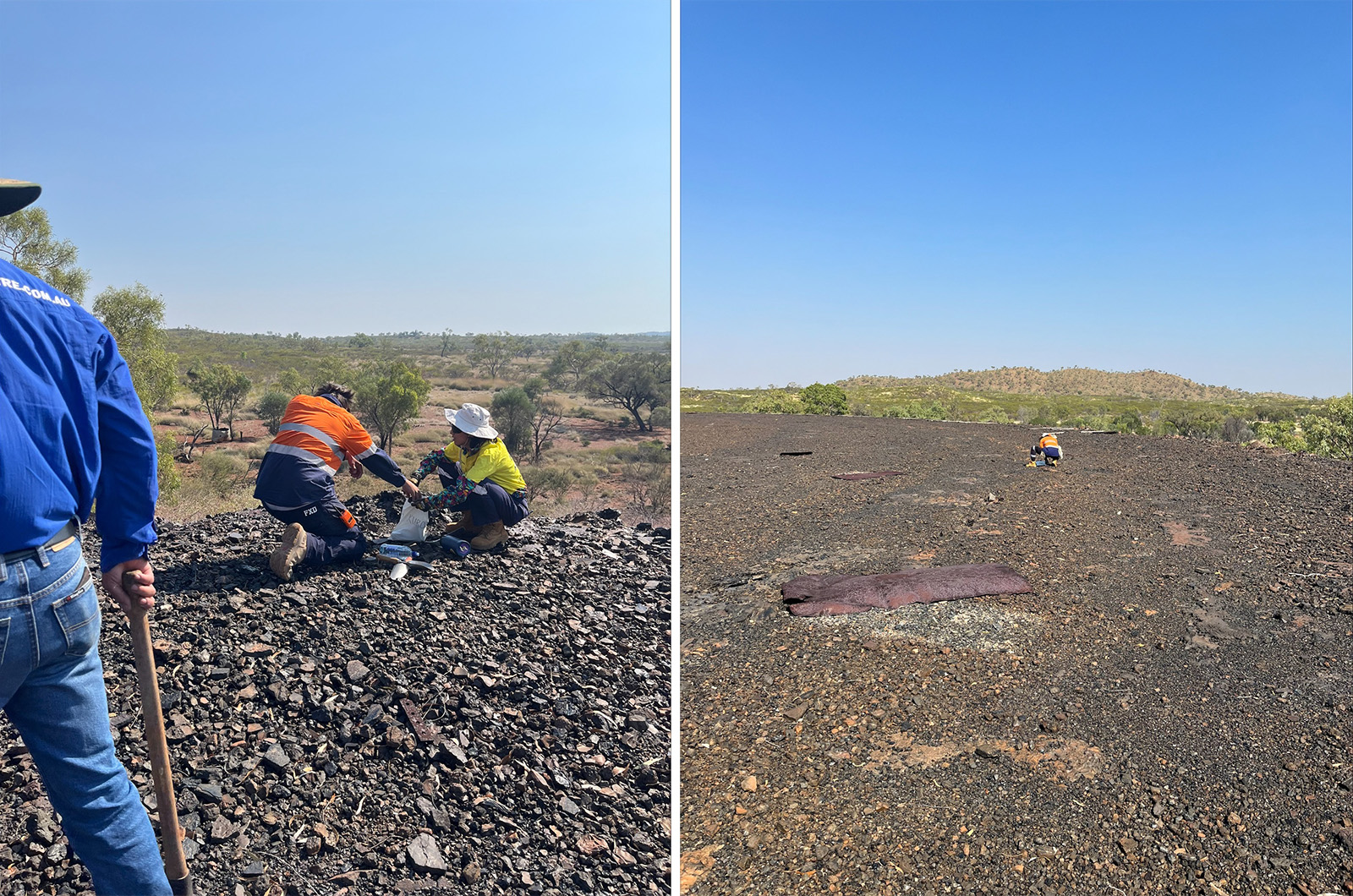
We ended our field campaign with a visit to Young Australian’s waste rock pile and ROM pad where we were able to grab 30 waste rock samples. At first look the rocks seemed rather bland, as expected for material designated as ‘waste’, but on closer inspection we found some rather interesting samples and textures. We also were sure not to miss taking a trip to look at the old mine pit (which was a definite treat for a mining engineer!).
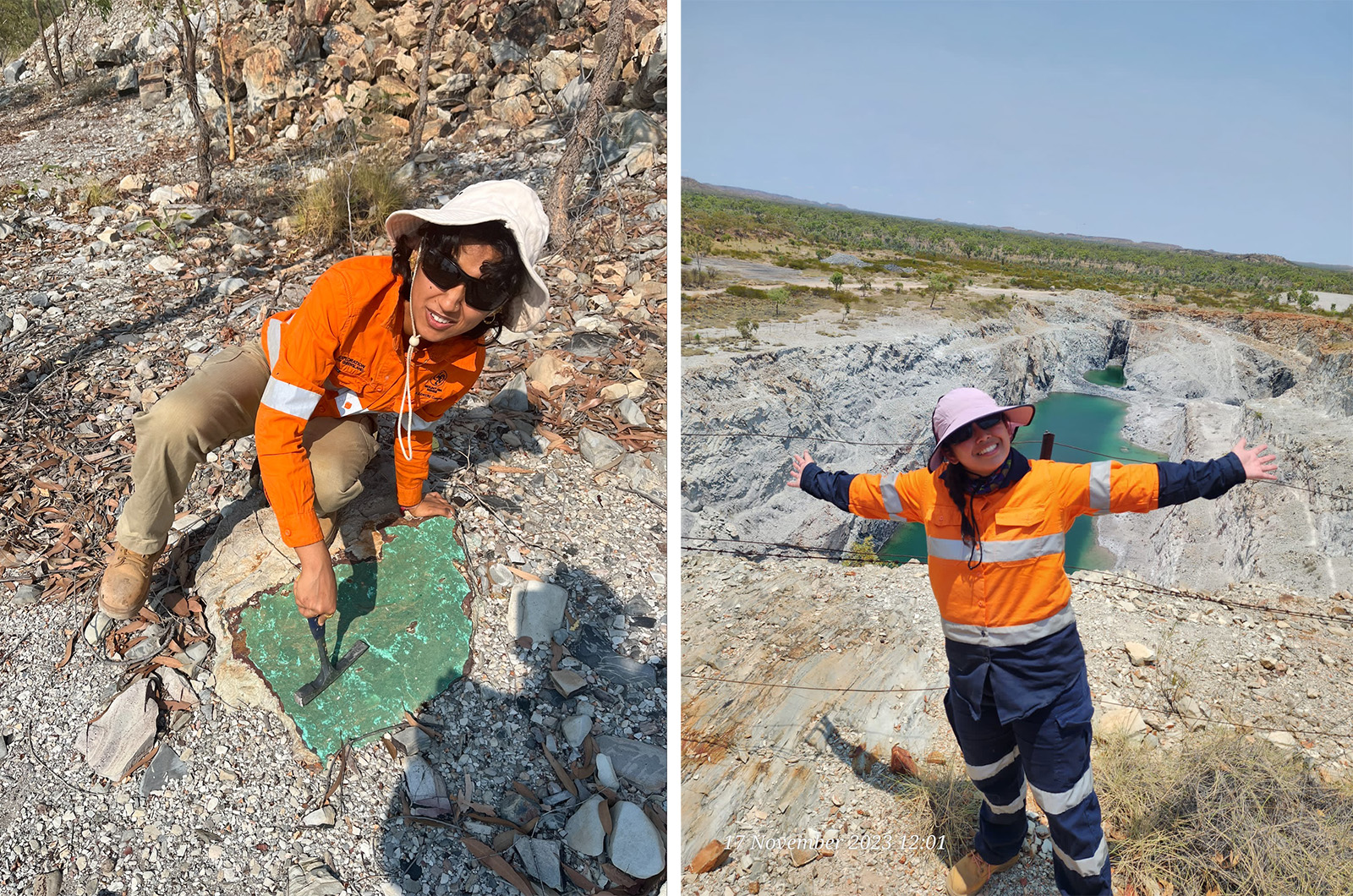
As I’m sure every MIWATCH field campaign is, my first one was definitely memorable. Not only was I fortunate to squeeze 3 very different sites in one trip, I was also able to explore the limits of up to where I could push myself. The pace of sampling mine waste is not quite the same as the hustle and bustle of mining ops or exploration work – and is certainly not for the faint-hearted. But the prospects of aiding a net zero future definitely outweighs the challenges the MIWATCH team go through!
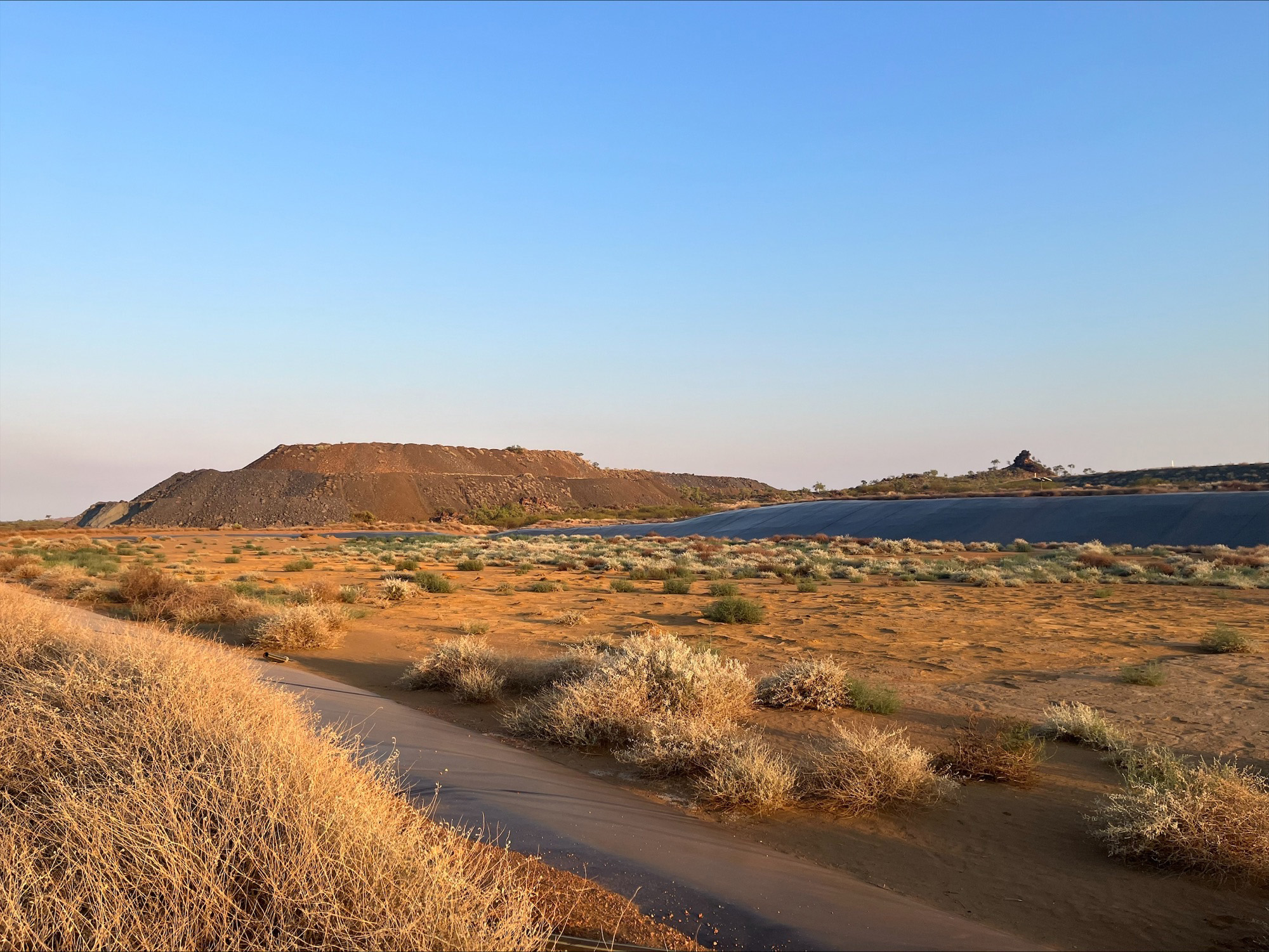
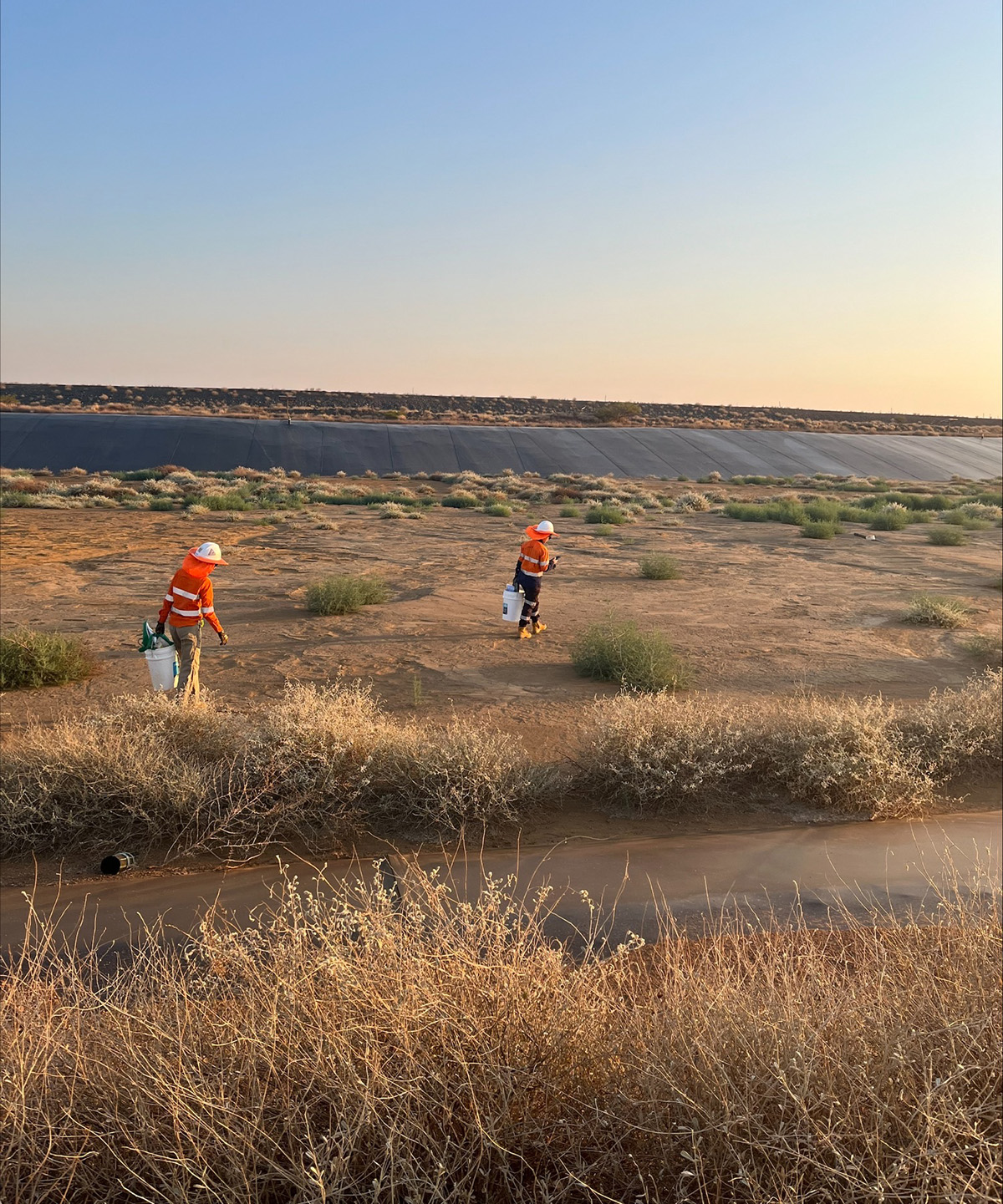
And just like that, the MIWATCH field works for 2023 has come to a close.
Aren’t you excited to know what’s in store for the team in 2024?
